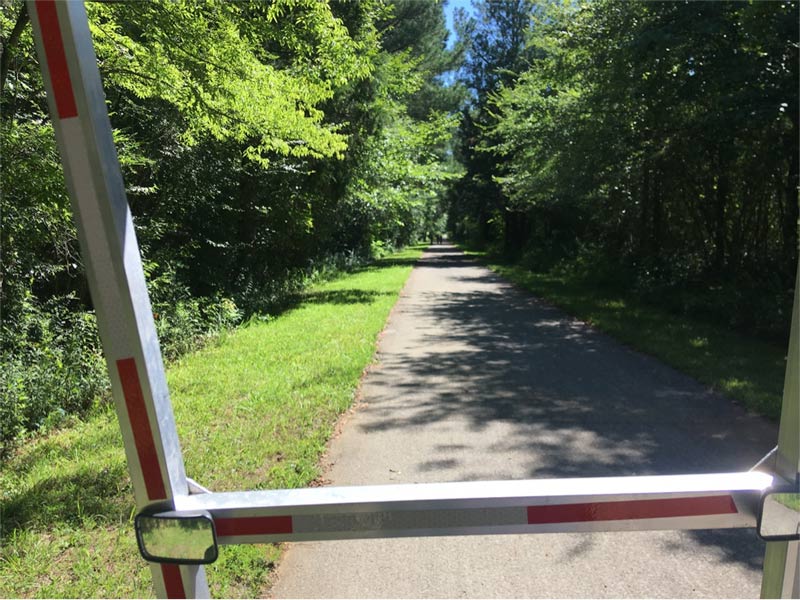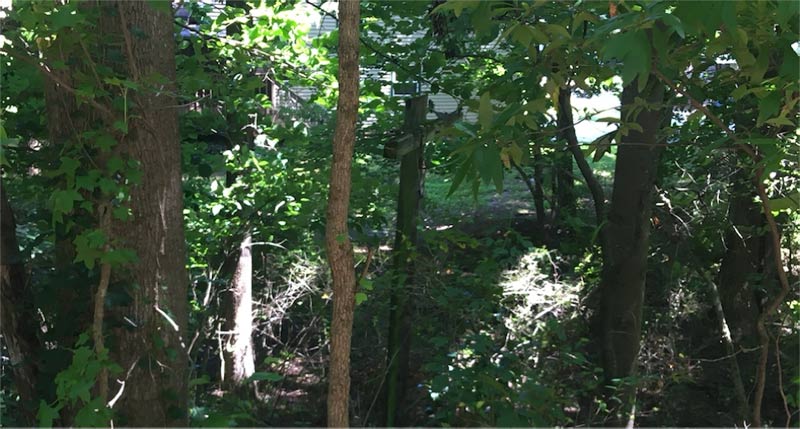7/11/20 – The Big Ride
At 6:30 a.m. I left the RV park and headed to the Chief Ladiga trailhead. It was a 12-mile ride through the old historic town of Anniston, Alabama. I had no time to stop and read the historical markers, today was the day for the big ride to Atlanta. All three of my batteries were fully charged, Sunride had a new rear tire replaced from the blow out in Texas, I had a ton of food to eat, and a couple of gallons of water. The goal of a 100-mile day had evaded me long enough, with high winds, thunderstorms, headwinds, and flat tires. Today was the day. Not only would it be my longest ride, it could be one of the most beautiful. The ride around Lake Tahoe would probably forever stay atop the list, but this ride through the Alabama and Georgia pines would be sensational!

I had been on the trail a couple of years before with my friend Roger so I knew what to expect: smooth sailing along a mostly flat abandoned railway converted to an interstate bike trail. There’s a lot of these “rails to trails” around the country. I want to seek them out wherever I go.
I was so excited I could hardly sleep the night before. I read the rules at the trailhead. “No excessive speeds.” “No motorized vehicles.” Roger had researched the definition for “motorized vehicles” and it seemed to be ok to have an electric bike on the trail; but what about Alabama laws? I decided to limit my speed to be on the safe side. A few miles in I saw another “No motorized vehicles” and a “surveillance enforced” sign. Oh well, now they can see me, solar panel and all. I made it through Alabama but then in Georgia I saw the most alarming sign “No motorized vehicles. Violators subject to a $1,000 fine and 30 days in jail.” Yikes! I passed a police car at an intersection where the trail crossed the road. No problem. Then another in the next town, then a third. No one raised an eyebrow. Evidently the intention of the law was to keep internal combustion engine motorcycles and mopeds off the trail. I finally relaxed and stopped playing the video in my head of being stopped, cited or arrested, going before the judge, hearing the officer charge that indeed my bike is motorized, and the judge slamming down the gavel pronouncing judgement: “30 days!” Of course, now everyone has cell phones so any other cyclist, runner, or walker on the trail could call 911 and report, “there’s a guy on a crazy-looking bike that we don’t think should be on the trail” and a policeman could be waiting at the next town. Didn’t happen. Everyone I passed in both directions smiled approvingly, many making favorable comments.
About 30 miles in, I stopped to change batteries and eat. It was 10 a.m. A friend back in Portland, Robert Enke, a naturalist approaching 80 years in age and still riding his bike, told me it’s healthy to occasionally allow yourself to get really hungry. I ate like a ravenous animal. Three hard boiled eggs, two bell peppers, a PBJ sandwich-and-a-half. I sat in the shade while Sunride stood in the sun. The trail was mostly shaded, a good thing on a 95-degree day, but a bad thing for absorbing solar energy to recharge the batteries. Also, I wondered about the dappled sunshine.

How would the batteries and the charge controller like getting blasted for a second or two in the clear then back to the shade? Bam, 150 watts! Now zero! Bam! Bam! Bam! The photons were hitting like machine gun fire. No problem. It turns out the equipment my friend Cliff selected was robust enough. It had handled rain and hail in recent weeks. My first discharged battery was being replenished bit by bit. Whenever I stopped for water or stretching, I always parked Sunride in the sun where I was getting 165 watts, nice and steady. I would need the additional watt-hours to make it past 100 miles.
The math was simple enough. Each of my 3 solar pre-charged batteries was good for 30 miles, so I would be able to make it 90 miles without any on-board charging. However, I would need an additional 300 watt-hours (.3 kWh) to go beyond 100 miles. That’s the equivalent of two hours of full sun at an average charge rate of 150 watts (150 watts x 2 hours = 300 watt-hours). Sunride has a battery monitor that shows state of charge. Five bars is fully charged. As power is used, it goes down to one bar, and when the last bar starts flashing, it’s time to change batteries. When I arrived at the end of the 105-mile ride, all three batteries were blinking. I felt like the race car driver who had just made it across the finish line on fumes.
I wasn’t exhausted at all. It was surprising how well I felt after my longest day in the saddle. As we loaded up Sunride I felt light on my feet, I had energy. People were asking how far I’d gone and were impressed at the distance; but I couldn’t take credit. Clearly, as always on Sunride, the sun had done most of the work.
The ride was exquisitely scenic the whole way. Mother Nature was wearing pine-scented perfume, not too much, just the right amount to be alluring. No one within 100 miles could help but notice. A monarch butterfly sat on the bench with me during lunch, his or her wings pulsing rhythmically. Rabbits, chipmunks, squirrels, and even a deer darted across the trail in front of me. I didn’t see any snakes! Roger, who has ridden the trail unassisted by sunshine, told me he’s seen them. Not seeing any kept intact the perfect day. Trees swayed in an occasional gentle wind. A red-tailed hawk hovered overhead. Farmers worked their fields. I passed old telegraph poles that ran alongside the railroad. These poles are easily missed blending with living trees that have sprung up all around them. Can you find one in the photo below?

The pole was like a cross signifying the resting place of the Old South. I thought of the book my friend and former boss at Coca-Cola Company, Ken Griffiths, wrote on the Civil War in the Atlanta area. The book, Seven Days in July is marvelously detailed. Perhaps these poles carried messages like “the Yankees are coming.” His descriptions of troops moving through the woods seemed even more vivid and real now that I was passing through. I could almost see Blue and Gray clad soldiers creeping through the forest, over and around the hills.
After basking in the woods all day, I smiled my way into the parking lot where Judy awaited with the trailer. I’ll be smiling for a long time remembering this ride. Breaking the 100-mile barrier for me was like running the first four-minute mile. Yet, I have to wonder how far could Sunride take me if there were no shade?
